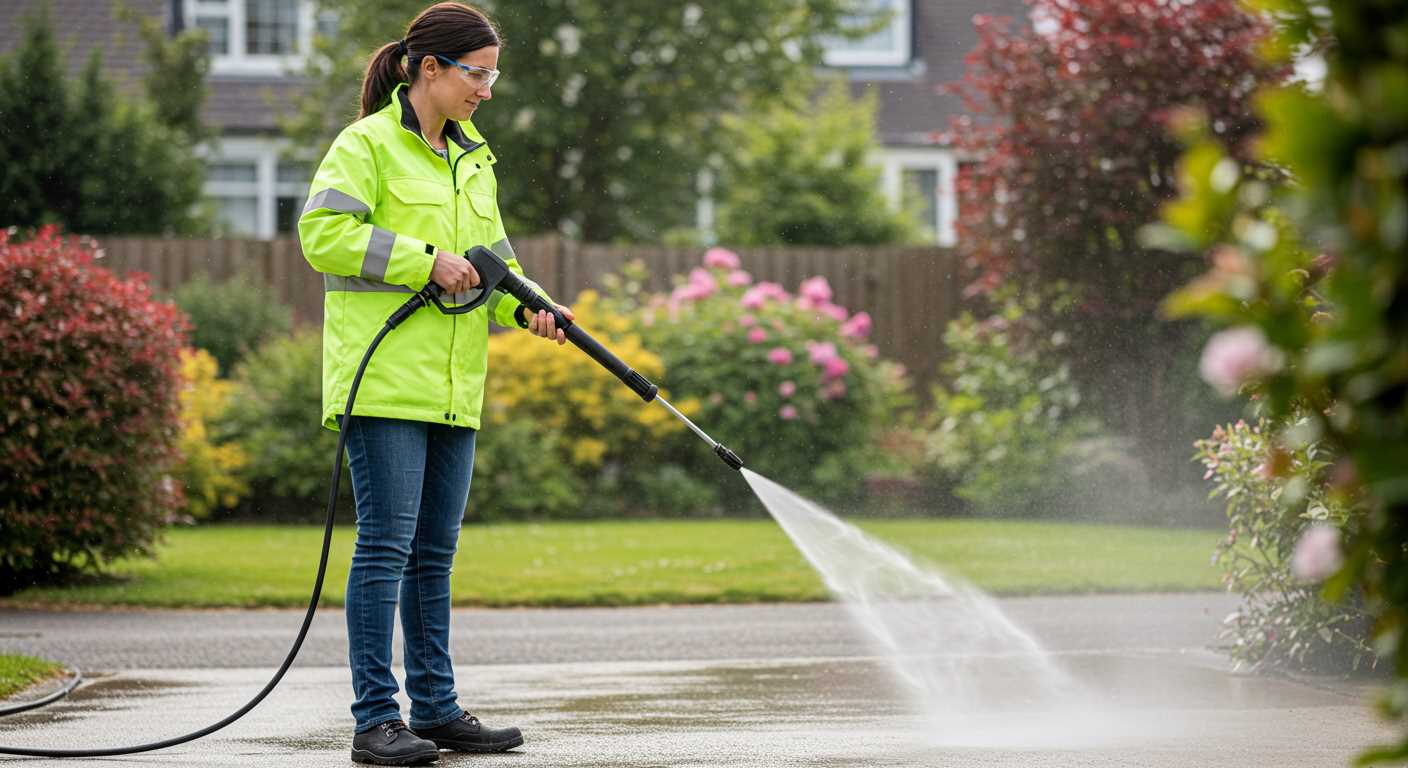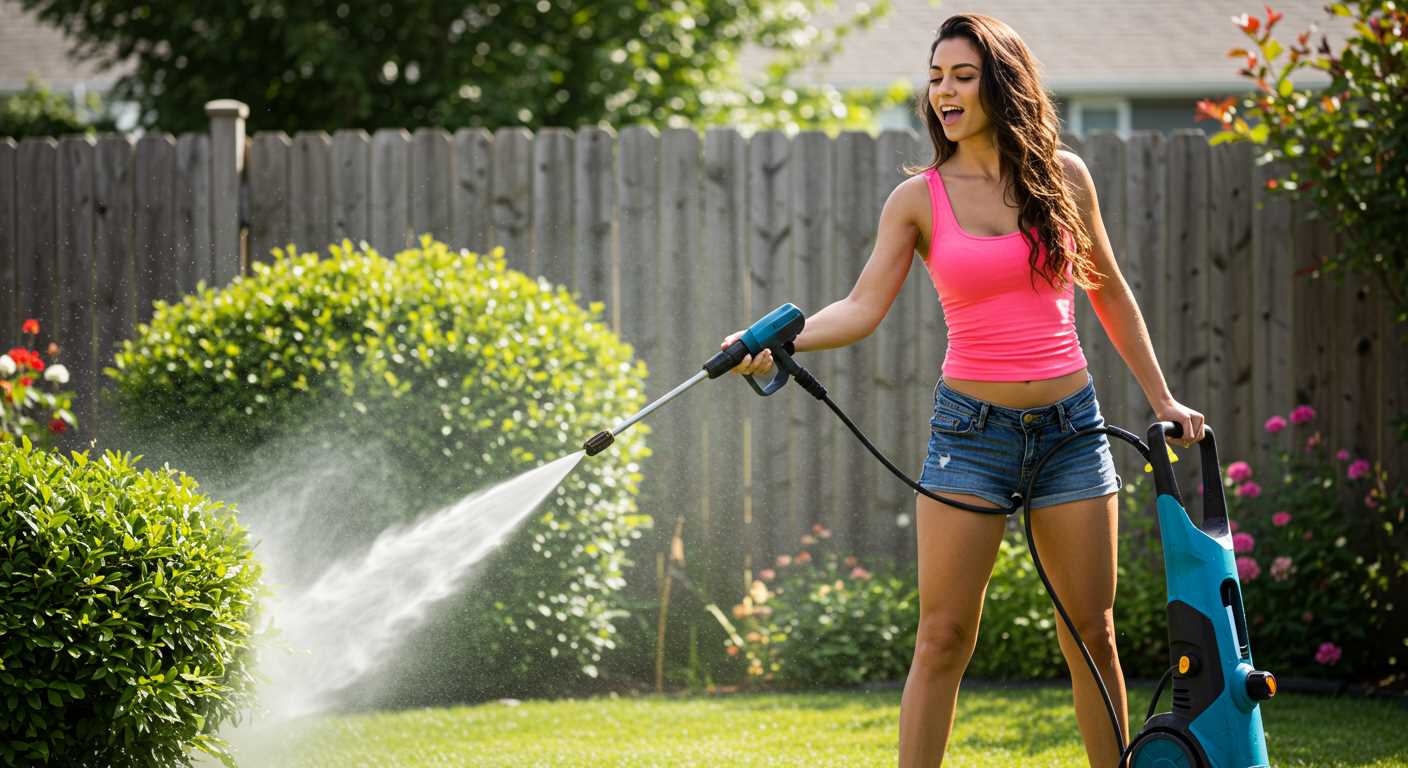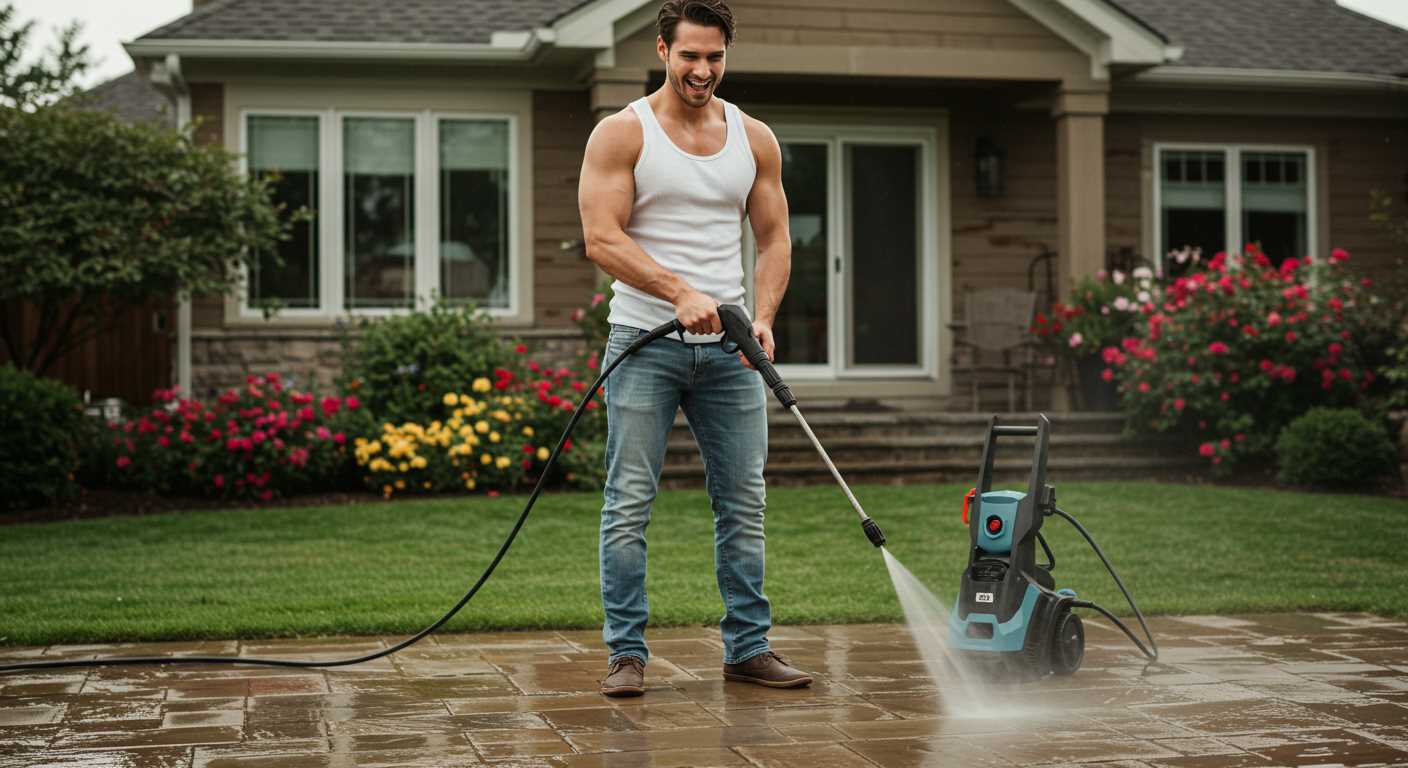



To effectively tackle difficult cleaning tasks, an output of 2700 to 3000 units is ideal. This range provides sufficient force to remove stubborn grime, dirt, and mildew from various surfaces without causing damage.
For lighter applications such as vehicles or lightly soiled patios, consider a model with a lower output, around 1500 to 2000 units. This allows for careful cleaning while preventing the risk of stripping paint or damaging softer materials.
When looking for performance, keep an eye on models that offer adjustable nozzles or varying pressure settings. This flexibility ensures that you can adapt the water force to suit different surfaces and types of dirt. Remember, achieving the right balance between pressure and accessibility is key to efficient cleaning.
Choosing the right equipment can save time and effort, ultimately leading to better outcomes. Take the time to assess your specific cleaning needs, and select a device that meets that criteria while staying within the recommended output range.
Understanding psi and its significance in pressure washers
A machine with a rating between 2500 and 3000 units delivers impressive muscle to tackle diverse tasks like deep-cleaning driveways or removing grime from heavy machinery. Models with ratings exceeding 3000 provide exceptional power for heavy-duty work but may be overkill for small residential tasks.
Different applications and their requirements
Choosing the right tool involves knowing what you’ll be cleaning. Here’s a breakdown of requirements based on various surfaces:
| Surface Type | Recommended Rating | Example Tasks |
|---|---|---|
| Light-duty (furniture, cars) | 1300-1900 | Washing vehicles, cleaning patio furniture |
| Medium-duty (decks, fences) | 2000-2500 | Maintaining wooden decks, cleaning garden furniture |
| Heavy-duty (driveways, siding) | 2500-3000 | Cleaning concrete surfaces, heavy grime removal |
| Commercial (large machinery) | 3000+ | Industrial maintenance, heavy-duty cleaning tasks |
Assessing power requirements
Higher figures give you more potential to eradicate stubborn stains and dirt, but selecting the correct tool also hinges on flow rate, measured in litres per minute. Matching both outputs ensures optimal performance. A focus on the desired results will guide your purchase decision regarding equipment, making it easier to achieve impressive outcomes with minimal effort.
Recommended Levels for Different Cleaning Tasks
For light tasks such as washing cars or garden furniture, a range of 1200 to 1900 units suffices. This power is gentle enough to clean without damaging surfaces or finishes.
Medium-Duty Cleaning
For general home cleaning, including driveways and patios, opt for units between 2000 and 2800. This level effectively removes grime, oil stains, and dirt build-up, providing a thorough clean.
Heavy-Duty Applications

When tackling tough jobs like stripping paint or cleaning heavy machinery, look for models that deliver 2900 to 4000. This higher force efficiently dislodges stubborn dirt and contaminants.
How to determine the right psi for your surfaces
To identify the suitable pressure level for cleaning, assess the material and condition of the surface first. For delicate surfaces like car paint, use a maximum of 1300 to 1600 units to prevent damage. Designed finishes and coatings on decks or fences require about 1500 to 2500 units, ensuring dirt and grime are effectively removed without harming the wood.
Surface Types and Recommended Pressure Levels
For concrete driveways and paths, 3000 to 3500 units are ideal; this effectively dislodges stubborn stains like oil and grease. Brick or masonry requires a similar range, but take care with old or damaged structures; reduce the level to between 2000 and 2500 units to avoid causing cracks.
Home exteriors, including siding, typically tolerate 2000 to 3000 units; however, always start on a lower setting and increase as needed. For roofs, particularly asphalt shingles, keep pressures below 1500 units to avoid dislodging tiles. Testing on an inconspicuous area is always wise before proceeding with full cleaning.
Tips for Safe and Effective Cleaning
Utilising the correct nozzles and spray angles can enhance cleaning efficiency. For tougher stains, a narrower spray pattern increases pressure concentration, while wider patterns are beneficial for broader surfaces and reducing risk of damage.
Remember to maintain a safe distance from the surface when applying force. This distance generally ranges from 12 to 24 inches, adjusting based on the type of material and pressure settings. Regularly inspect your equipment to ensure optimal functionality and safety during use.
Advantages of using higher psi cleaning devices
Utilising cleaning machines with elevated pressure levels presents numerous benefits for a variety of tasks, enhancing productivity and efficiency. Here are the key advantages I’ve discovered from years of hands-on experience:
1. Superior Cleaning Power

High-pressure models deliver an impressive force of water, effectively removing stubborn dirt, grease, oils, and grime. This capability is crucial when tackling tough surfaces such as:
- Concrete driveways
- Decks and patios
- Heavy machinery
In my evaluations, models operating at around 3000-4000 psi often see improved results, significantly reducing the time spent on challenging tasks.
2. Enhanced Versatility
Machines with increased pressure levels are more adaptable across a broader range of cleaning applications. This versatility allows one to switch between different surfaces without sacrificing performance. Some common uses include:
- Removing graffiti from walls
- Washing vehicles
- Cleaning roofing materials
This flexibility makes higher-rated devices an invaluable asset for both professionals and homeowners, streamlining multiple cleaning projects in one go.
3. Reduced Labour Intensity
With the power of elevated pressure, less physical effort is needed for cleaning tasks. This advantage means that:
- Fewer hours spent labouring over surfaces
- Less reliance on chemicals for tough stains
By employing models with higher capabilities, one can save energy and focus on completing jobs more efficiently.
Investing in equipment with increased pressure ratings often results in a nearly instantaneous return on investment through time saved and quality achieved. High-pressure devices remain an indispensable choice for serious cleaning projects.
Risks of Using Excessive Pressure on Various Materials
Utilising excessive pressure can result in significant damage to various surfaces, leading to costly repairs or complete replacements. For instance, wood, especially untreated or older types, can splinter or become gouged, causing irreversible damage. It is advisable to maintain pressures below 1500 PSI when cleaning wood surfaces, ensuring the integrity of the material.
On painted surfaces, high pressure can strip paint or cause peeling. The recommended level for such applications typically ranges between 1200 to 2000 PSI, depending on the paint’s condition and type. Always test a small area first to rule out unexpected results.
Brick and stone, while generally more robust, can still be subject to erosion when exposed to pressures over 3000 PSI. The mortar can deteriorate, leading to structural issues. Therefore, utilising a lower pressure of around 2500 PSI is often sufficient for effective cleaning without risking damage.
Risks to Delicate Materials
For delicate surfaces such as glass, ceramic, or certain metals, excessive pressure can lead to shattering or significant scratches. High-end cars, for example, can suffer from clear coat damage, with pressures exceeding 1500 PSI potentially causing swirl marks. Always opt for the gentlest setting available for sensitive surfaces.
Composite materials, often used in decking and furniture, can also react poorly to high pressure, leading to delamination or surface degradation. Around 1200 PSI is usually adequate for cleaning while preserving the integrity of these materials. It’s crucial to be mindful of the specific properties of each surface to avoid unintended damage.
Comparing Electric vs. Gas Cleaners in Output
Electric models typically produce lower output than their gas counterparts, ranging from 1,300 to 2,000 units, while gas machines can achieve over 5,000. For routine tasks such as washing cars or patios, electric machines are often sufficient. Their lightweight design and quieter operation make them ideal for residential use.
Performance Variability
Gas-powered units excel in heavy-duty applications, offering robust cleaning capabilities suitable for commercial use. The increased output ensures deep cleaning of tough grime and stubborn stains on surfaces like concrete and brick. However, they require more maintenance and contribute to higher emissions. Electric units, while lower in output, are easier to operate and maintain, making them appealing for casual users.
Cost and Convenience
In terms of cost, electric options are generally less expensive, both in initial purchase and operational costs. However, the choice will depend on the specific requirements of the cleaning tasks at hand. For extensive outdoor projects requiring prolonged use, investing in a gas unit might prove more advantageous. Conversely, for everyday cleaning, electric machines provide a convenient and cost-effective solution.
Adjusting psi settings for optimal cleaning results
To achieve the best cleaning outcomes, tailor the pressure output based on the specific task at hand. A versatile machine offers adjustable settings, enabling fine-tuning to meet various cleaning demands.
Steps for Adjusting Settings
- Start with the lowest setting for delicate surfaces such as painted walls or vinyl siding to prevent damage.
- For tough grime on concrete or brick, gradually increase the output until the desired results are achieved without causing harm.
- Utilise different nozzle tips, as they can significantly affect the water flow and pressure. A wider spray angle typically reduces impact while focusing streams increases it.
- Adjust the distance from the surface being cleaned. Maintaining a consistent distance can help control the intensity and effectiveness of the cleaning process.
Regularly verifying the pressure settings is crucial, especially as different surfaces can require changing levels. Always consult the manufacturer’s guidelines for specific recommendations based on the model being used.
Testing and Observing Results

After adjusting the settings, conduct a small test in an inconspicuous area. This will help gauge whether the applied force is suitable for the material. If necessary, modify the settings again. Observing the initial outcome can prevent time-consuming mistakes and ensure optimal conditions for cleaning.
Consistency in pressure adjustment safeguards the integrity of the material while achieving a clean finish. By carefully managing the output, not only can you enhance the effectiveness of cleaning sessions, but also prolong the lifespan of the surfaces. Fine-tuning pressure is a straightforward yet essential component of effective cleaning equipment use.
Maintenance Tips to Ensure Consistent Output Performance

Regularly check and clean the water inlet filter to prevent clogging, which can significantly impact the machine’s efficiency. A clogged filter restricts water flow and can lead to inconsistent performance.
Inspect the high-pressure hose for any signs of wear or damage. A worn-out hose may cause pressure loss or even leaks. Replace any damaged hoses promptly to maintain peak performance.
Ensure that the nozzle is compatible with the task at hand. Using the wrong nozzle can result in reduced efficacy and even potential damage to surfaces. Clean the nozzle frequently to avoid blockages.
Regular Lubrication and Maintenance
Regularly lubricate moving parts as per the manufacturer’s guidelines. This step is crucial for prolonging the operational life and maintaining consistent performance.
After each use, drain any remaining water from the system to prevent mineral buildup that could affect function. Additionally, store the unit in a cool, dry place to protect it from extreme temperatures and environmental factors.
Annual Professional Check-ups
Consider scheduling an annual maintenance service. A professional can perform a thorough inspection, ensuring that all components are in optimal condition, thus safeguarding efficiency and longevity.
FAQ:
What is considered a strong psi for a pressure washer?
A strong psi (pounds per square inch) rating for a pressure washer typically ranges from 2700 to 3000 psi. This level of pressure is suitable for heavy-duty cleaning tasks, such as removing stubborn dirt and grime from driveways, decks, or heavily stained surfaces. For residential purposes, pressure washers in this range can effectively tackle most jobs, ensuring efficient performance without causing damage to surfaces.
How does the psi of a pressure washer affect its cleaning ability?
The psi rating directly impacts the cleaning efficiency of a pressure washer. Higher psi means more forceful water pressure, which can remove tough stains, grease, or mildew more effectively. However, it’s important to choose the right psi for the task at hand; too much pressure can cause harm to delicate surfaces like painted wood or thin metal. Understanding the job requirements and matching them with the appropriate psi will enhance the cleaning experience.
Is a higher psi always better for a pressure washer?
Not necessarily. While a higher psi indicates stronger cleaning power, it isn’t always the best choice for every job. If you’re working on softer surfaces or doing detailed cleaning tasks, too much pressure can damage the material. It’s often more effective to select a pressure washer with a suitable psi for the specific cleaning task. For instance, lighter jobs like washing cars or cleaning outdoor furniture often require lower psi, around 1200 to 1900 psi, to avoid surface damage.









